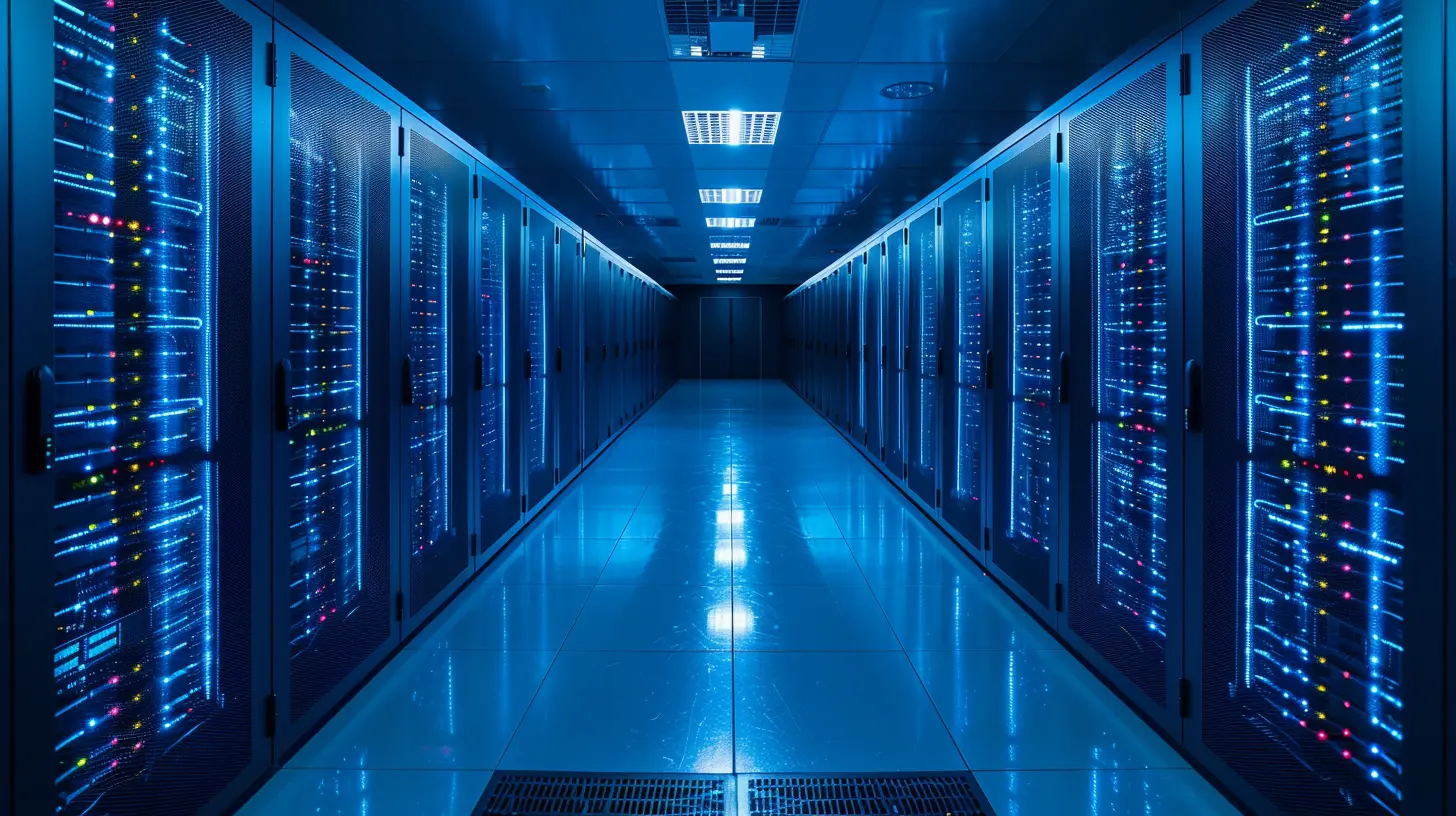How to Achieve High Availability in Data Center Operations
14 November 2025
Ever had that frustrating moment when you're about to check something online, and the page just won’t load? Annoying, right? Now, imagine if that downtime happened to a critical business system—chaos! That’s why high availability (HA) in data centers is a must. Whether you're an IT professional or a tech enthusiast, this guide will walk you through how to achieve high availability in data center operations.

What is High Availability and Why Does It Matter?
Let’s break it down. High availability refers to a system’s ability to remain operational and accessible for a long period without failures. Think of it as having a super-reliable car that never breaks down, no matter how far you drive. Businesses rely on HA to keep their services running 24/7, because even a few minutes of downtime can be costly.The Cost of Downtime
IT downtime is more than just an inconvenience. It can:- Lead to financial losses (think thousands or even millions of dollars).
- Damage customer trust and reputation.
- Cause disruptions in business operations and productivity.
With stakes this high, achieving high availability is non-negotiable.
Core Strategies to Achieve High Availability
Now, let’s talk about how you can ensure your data center stays up and running like a well-oiled machine.1. Redundancy is Your Best Friend
Redundancy is like having a spare tire in your trunk—it’s a lifesaver when things go wrong. In data center operations, redundancy means duplicating critical components so that if one fails, another is ready to take over instantly.- Hardware Redundancy: Use multiple servers, storage devices, and network connections.
- Power Redundancy: Invest in uninterruptible power supplies (UPS) and backup generators.
- Data Redundancy: Implement RAID (Redundant Array of Independent Disks) to protect against data loss.
By building redundancy into your infrastructure, you minimize single points of failure.
2. Load Balancing for Traffic Distribution
Imagine a highway with multiple lanes—if one lane gets jammed, traffic smoothly moves to another. Load balancing works similarly in data centers. It distributes incoming traffic across multiple servers to prevent any single one from becoming overwhelmed.Benefits of load balancing:
- Improves system performance.
- Enhances fault tolerance.
- Prevents overload on any single server.
Some popular load balancers include NGINX, HAProxy, and AWS Elastic Load Balancer.
3. Disaster Recovery Planning
Let’s be real—disasters are unpredictable. From power outages to cyberattacks, anything can happen. That’s where disaster recovery planning comes in.Key elements of a disaster recovery plan:
- Regular backups: Ensure data is backed up daily or in real time.
- Replication strategies: Use geographically distributed data centers to keep a copy of critical data.
- Failover mechanisms: Automatically switch to a backup system if the primary one fails.
A well-structured disaster recovery plan can make the difference between bouncing back quickly or suffering prolonged downtime.
4. Data Center Tier Classification
Did you know that data centers have a tier system? Just like hotels have star ratings, data centers are classified into Tier I to Tier IV, depending on their level of redundancy and reliability.- Tier I: Basic setup with minimal redundancy. (Think of it as a budget motel.)
- Tier II: Some redundancy but still might experience downtime.
- Tier III: Highly redundant, minimal downtime (up to 1.6 hours/year).
- Tier IV: Fully fault-tolerant, 99.995% uptime (basically the VIP suite of data centers).
For businesses that require maximum availability, aiming for a Tier III or Tier IV data center is the way to go.
Best Practices for Maintaining High Availability
Now that you know the core strategies, let’s look at best practices to maintain high availability like a pro.1. Regular Monitoring and Maintenance
Would you drive your car for years without servicing it? Probably not. The same logic applies to data centers. Continuous monitoring helps detect potential issues before they escalate.- Use monitoring tools like Nagios, Zabbix, or SolarWinds to track system health.
- Schedule regular maintenance to replace worn-out hardware.
- Set up alerts to notify your team of unusual activity.
Proactive monitoring keeps systems running smoothly with minimal risk of unexpected failures.
2. Implement Virtualization and Cloud Computing
Traditional physical servers? A thing of the past! Virtualization allows multiple virtual machines (VMs) to run on a single physical server, improving efficiency and failover capabilities.Benefits of virtualization:
- Reduces hardware dependency.
- Enables quick recovery and migration.
- Optimizes resource usage.
Additionally, cloud services like AWS, Microsoft Azure, and Google Cloud provide on-demand scalability and availability, making them excellent choices for businesses prioritizing HA.
3. Automated Failover Mechanisms
When a server fails, waiting for manual intervention is a no-go. Automated failover ensures that if one system goes down, another takes over seamlessly, minimizing disruption.Examples:
- Database failover: If the primary database crashes, a secondary one takes over automatically.
- Network failover: If an internet connection drops, traffic is rerouted through a backup ISP.
Automation is key in reducing downtime and maintaining business continuity.
4. Improve Physical Security
You might think cyber threats are the biggest danger to a data center, but physical threats—like fires, power outages, or unauthorized access—are just as critical.Tips to enhance security:
- Install fire suppression systems.
- Use biometric access controls.
- Ensure proper cooling to prevent overheating.
A secure data center is a reliable data center.
Future Trends in High Availability
Technology evolves, and so does high availability. Here are some emerging trends shaping the future of HA in data centers:- AI-powered monitoring: AI-driven analytics predict failures before they happen.
- Edge computing: Processing data closer to users to reduce latency and improve speed.
- Software-defined infrastructure: Flexibility in managing data center resources programmatically.
Keeping up with these trends ensures that your data center remains cutting-edge and resilient.
Final Thoughts
Achieving high availability in data center operations isn’t just about slapping together some servers and hoping for the best. It requires strategic planning, redundancy, automation, and continuous monitoring to ensure data and services remain accessible at all times.Think of it like preparing for a road trip—you check your tires, stock up on fuel, and have a backup plan in case something goes wrong. Data centers need the same level of preparation to avoid the dreaded downtime.
By implementing the strategies discussed in this guide, you’ll be well on your way to ensuring that your data center runs like a finely tuned engine—always available, always reliable.
all images in this post were generated using AI tools
Category:
Data CentersAuthor:

Gabriel Sullivan

